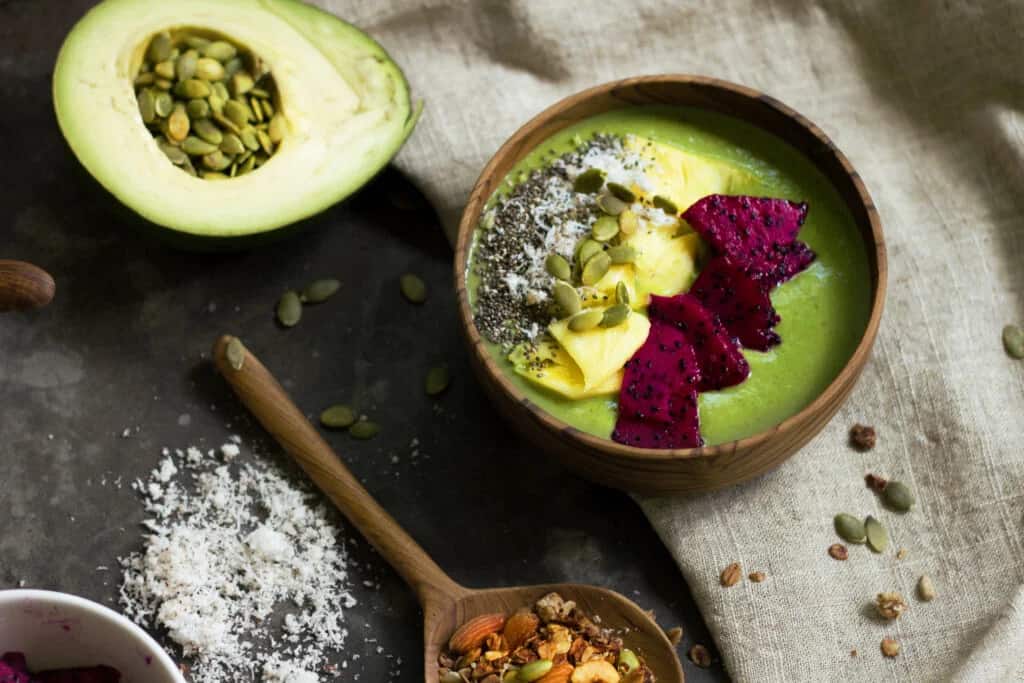The #1 Yogic Diet: Ancient Nutrition for Modern Living

Between the genetically modified and processed foods we’re offered and the various diet advertisements pushed on us, it is hard to know in what direction to take your diet. While there are new diet ideas rotating around the internet and in health magazines, the diet of a yogi have been around for thousands of years. They have been developed and accessed by many great yogis to balance the body and stimulate the mind. Whether you are a strict yogi dietitian, or simply interested in a healthy lifestyle, learning about this ancient diet draws the connection between yoga and our food.
The Yogic diet is referred to as the Sattvic diet, a regime that supports peace, love, and awareness. The first and most important aspect of the yogic diet is how the food is raised and prepared. Whether it’s vegetable or animal products, it’s important to be mindful of where your food is coming from.
Poor food originates from bad soil and animal mistreatment. The use of chemical fertilizers or insecticides, premature picking, artificial ripening, and preservatives all deprive the beautiful fruits and vegetables of their energetic and nutritional value. To engage in this diet, we must reduce the amount of “bad” food that we consume and to consciously choose foods that have been farmed with awareness and love.
Eating foods that are grown in harmony with the environment and are cooked with awareness carry Prana (life force energy) and high vibrations, which transition into our bodies and our minds. Try visiting your local farm stands or look for local, fresh vegetables in your grocery stores. Often the best option is to grow your own vegetables, if feasible. Not only does it benefit your whole being, but it is a fun and beautiful experience!
Great and experienced yogis have been known to sustain themselves on minimal, simplistic diets, consisting of raw foods, water, fruit, milk, ghee, and fasts. Yogis in retreat often live off of wild foods as part of their spiritual path and to deepen their connection with nature. The ultimate goal of the yogic diet is to use food as an aid in spiritual development. When used in combination with pranayama, asana and meditation, these particular foods are recognized by yogis to deepen the connection with the mind and to reduce physical awareness, while increasing detachment. While the great yogis are able to benefit from this form of eating, developing yogis require a wholesome diet, more aligned to the Ayurvedic diet.
A Yogic Diet Energy Guide
Incorporated into the yogic diet, of course, is the spiritual science and connection between the elements, foods, and your body. The energy in our food affects our well-being. Pranic foods have high vibrational energy and consist of food such as leafy greens and sprouts. Vegetables that grow fast and in the spring is when pranic energy is as its fullest. These types of foods have a stimulating, cooling, and purifying influence on the body and are best paired with herbs such as ginger, coriander, or mint.
Apanic foods promote earth elements in the body and consist of root vegetables such as mushrooms, potatoes, carrots, sweet potatoes, and herbs like ginseng and tonic. These foods support strength and endurance. Samana foods have a balancing effect on the body’s system and consist of whole grains, rice and pre-digested foods such as dairy, honey, and raw sugars. These foods are nourishing and easy to digest but must be taken in small amounts.
Vyana foods strengthen and stimulate our bodies energy system, helping our minds to expand. These kinds of foods grow and expand on the ground. They consist of vegetables and fruit such as squash, melons, strawberries, tomatoes and beans. Udana is food that grows in the air and contains the ether element. These foods consist of mainly nuts and fruits and are known to nourish the mind and heart.
TO COOK OR NOT TO COOK, THAT IS THE QUESTION
The Yogic & Ayurvedic diet consists of mainly a vegetarian diet. While many people are drawn to raw food, traditionally yogic and ayurvedic diets promote cooking vegetables and using raw food for only small periods of time and for detox purposes only. Raw foods increase the air elements and are difficult to digest which can easily imbalance the digestive system. Cooked foods promote earth, water, and fire elements in the body, which help the digestive track and strengthen the body. The yogic and Ayurvedic diet suggests that the best path is to maintain an equilibrium by having a plate with 10 to 20 percent raw foods such as cucumbers, radishes, carrots, tomatoes and herbs, with 80 to 90 percent cooked vegetables, beans, or grains in your diet.
DETOX AND CLEANSING
There is also a wide range of new cleanses and detoxes that have been brought to the attention of the health oriented community. The yogic & Ayurvedic diet does support detoxes. However, it is important to be mindful of your body’s digestive limitations and plan a minimal detox period accordingly. While trying a detox or raw food diet, make sure to incorporate foods and herbs that support fire elements, such as cayenne pepper, ginger, cinnamon and basil, which will promote digestive power and protect the balance in your body.
VEGANISM, PALEO, AND BLOOD DIET
If you haven’t heard already, Paleo is a new and widely accepted diet based on the caveman diet our ancestors supposedly ate. It consists of raw foods, nuts, fruits, and meats. There is also the blood diet, which is based on your blood type. Many O blood types need meat, while AB blood types can sustain themselves on vegetarian diets. Alternatively there is veganism, which removes all meat and animal by-products from the diet, consisting of vegetables, fruits and grains.
The Ayurvedic & yogic diet finds a beautiful balance between them all. The yogic diet is based in mindfulness, which usually generates a diet of vegetables, fruits, nuts, grains, and dairy. Traditionally, the yogic diet does not support eating meat because it goes against the principle of ahimsa or non-violence, which is the first of the Yamas in Pantajanli’s Yoga Sutras. However, if meat is to be consumed, it is considered better to eat fish or chicken, over red meat.
Dairy is also often a controversial subject in the health and nutrition field, however the yogic diet consists of many dairy products and is used in Ayurveda as a healing modality. As long as the dairy is fresh and produced through mindful efforts, it can be beneficial to the body and spirit. One traditional and delicious yogic meal is boiled milk with spices such as ginger, cinnamon, and cardamom. Try it the next time you get your hands on fresh whole milk!
Summary
Of course, diets are always about the individual, their personal beliefs, and nutritional needs. However, what is unique about the yogic diet is that the main focus is not simply food itself, but rather the awareness and love connected to it. Whether you choose to eat meat, dairy, or vegetables as your main sustenance, you can incorporate yoga into your diet.
This traditional diet focuses on enlightening, balancing, and nourishing not only your physical body but your mind and spirit as well. As you move towards a deeper yoga practice, stay mindful of what you eat and where your food comes from.
David Frawley: https://en.wikipedia.org/wiki/David_Frawley
Purchase on Amazon here: https://www.amazon.com/Yoga-Ayurveda-Self-Realization-David-Frawley/dp/0914955810





